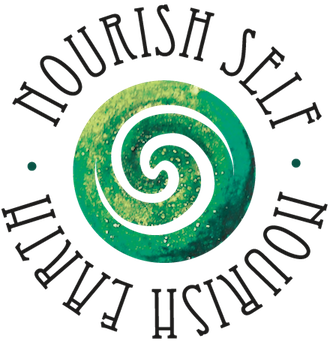Every Plant Belongs to Earth
Tamarisk at the peak of summer. According to the Arizona Breeding Bird Atlas, forty-nine species of birds use salt cedar as a breeding habitat, including the endangered western willow flycatcher. As well, this shrub also produces profuse nectar and early season pollen supporting a diversity of bees and other pollinators.
Plants are here to heal. This is their gift…their gift to Earth, humans and all of nature. Plants exist to transmute the life force that is hidden in light. This is the gift, the grace, the power of plants. And for all of human existence we have evolved with plants, relying on them for food and medicine…relating with them as our relatives and allies, with love, reverence and respect.
Now, in our country and world wide, there is a great distrust and misunderstanding of plants. This betrayal is driven by chemical corporations such as Syngenta and Monsanto (now owned by Bayer), who have a lot to gain by turning humans against plants and with advertising, programming us to see them as the enemy or even evil. In the United States $137 billion is spent annually in the war on invasive species and $1.4 trillion worldwide. In addition to chemicals, other eradication methods include chainsawing, chaining or brush hogging trees and vegetation.
The plants labeled as invasive have arrived in response to huge disturbances in ecosystems including human impacts such as travel, development, monocrop agriculture, and pollution as well as a changing climate. As herbalist Stephen Harrod Buhner says, so-called “invasive species” are a corrective to ecological disturbance, and the current war on these plants is a sign that we aren't trusting the self regulating intelligence of Earth or Gaia who has been here billions of years longer than humans.
In this self regulating intelligence of Gaia, plants come in to cover the earth where there has been disturbance. For example, when there is a forest fire or overgrazing the first plants to come in are prickly and pokey as if to say “no trespassing, this land needs a rest.'' In ecology or permaculture this would be considered the first succession of plants coming to hold the soil together and nourish the earth back to health…over time…Earth’s time…geologic time… a time much longer than the modern human has time for.
When we trust Gaia, we recognize that the plants labeled as invasive are responding to ecological disturbance and, then we can get curious and ask, “What are they doing?”. We have to approach this question with great humility. We can’t presume to know the answer before we start. We have to first learn to see what is right before us, to see with clear and direct perception, and this requires releasing our programming that has us fearing plants and seeing them as other. Then we must let the plant and the ecosystem teach us about what is occurring.
“Holistic restoration planning requires an honest accounting of what has come to pass as well as a comprehensive view of what we can do about it. The problems are complex, and the solutions are likely to be more so…Navigating from a paradigm that views invasive species as scourges to one that looks at them as opportunities for deeper ecological and economic engagement will take time and commitment, especially because the old paradigm is so entrenched politically, economically, and academically. The tide is shifting though, as more and more of us are coming to realize that the herbicide-based eradication approach to restoration is outmoded—a futile attempt to regain an imagined past—and we need to be focusing our time, resources, and energy on adapting to the future.”
Understanding and accepting that “invasive species” have a role in the healing of the earth means we can work with them in a holistic approach to land regeneration. For example, in caring for the land where I live (that was originally cleared of native trees and vegetation and then over grazed), my first step was to refrain from doing what caused harm in the first place and avoiding practices that would further disturb the soil. And along with not tilling the soil, I regularly spray our fields with worm compost extract which improves soil health.
It was clear that the cheatgrass and tumbleweeds were the only plants who could grow in the blow sand without irrigation and were holding down the soil and providing mulch when they died back. I work with these pokey and less than desirable introduced species by raking them up in the fall and winter and in the process I notice how they keep the soil damp and shaded long enough for more desirable succession plants to grow, such as purslane, filaree and mallow.
Over the course of the fifteen years of stewarding our land, the preferred bunch grasses, wild onions, cactus, shrubs and wildflowers have grown out of the seedbank held in the earth waiting for the right conditions to return. These plants have been adapted to the soil, climate and rainfall in our area for a very long time. While I will always take a stand for the role that first succession plants play in the healing of the land, I also always celebrate the plants who indicate a balance in the greater health of an ecosystem and I’m thrilled to see our land regenerating over time.
Another story to share….a few years ago, I sat next to a stump that once was a great old Russian olive tree on the Escalante River and as I baked in the full sun, I questioned the logic of the eradication project that removed these trees along the river corridor. It was at the time of summer when the annual defoliation of the cottonwoods was occurring and tent caterpillars were falling from the sky. It was hot, and I thought about the fully exposed river getting hotter and all the species the environmental and conservation groups endeavor to save, not being able to withstand the sudden change in conditions.
Can we imagine that perhaps with a changing climate these Russian olive trees were actually providing a service, keeping the river at a more stable temperature? Can we imagine that these nitrogen fixing trees were actually providing a service of drawing carbon out of the atmosphere at a time when we need every tree we can get?
When there were still Russian olive trees on this river, I would invite my groups of herbal apprentices to sit with these trees and with tamarisk to see what they noticed and experienced. After some time we would gather to discuss each person's experience and unanimously each student would express complete bewilderment over the hostility towards these trees. Each of them spoke of beauty, shade and the fragrant flowers that were full of bees and other pollinators.
For the next hour we would sit in the shade of the great old Russian olive tree and talk about the conditioning involved that has people more afraid of plants than chemicals and has government agencies brush hogging and chaining a forest of slow growing pinon and juniper (native plants), claiming a return to historic grasslands.
We’d talk about how the gift of plants is healing, and how books like Invasive Plant Medicine by Timothy Lee Scott reveal that the plants labeled as “invasive” are arriving at a time of diseases that these plants can treat. Japanese knotweed, for example, is a remedy for Lyme’s disease, and the Russian olive fruit is “strongly active against many pathogenic influences including cancer,” and contains selenium, a nutrient that supports immunity and is currently deficient in foods grown with chemical agriculture.
White crowned sparrow in a Russian olive tree....the fruits of these trees provide an important food source for birds and turkeys. (photo credit Chuck Bartlett).
Additionally in the book Beyond the War on Invasive Species, Tao Orion gives many examples of birds, animals and bees who have adapted over time to introduced plant species. One example is the endangered willow flycatcher found nesting in Tamarisk by crews who were in the process of removing this naturalized plant.
Orien also gives a thorough description of the role Tamarisk has in cleaning up water affected by agricultural runoff and salinization caused by dams impeding the natural flow of a river. And that if we really want to change the phenomenon of invasive species, we have to get to the source of things, which would require changing our perspectives and behaviors.
Can we really name any plant as native when ecosystems are continually adapting to changes in the environment and humans are moving plants around as we always have? Resource ecologist Haikai Tane “branded the war against naturalizing species as nativism, an ideology that sought to separate nature into good and bad species according to a fixed historical reference.”
All plants belong to Earth. There is a story in the world of herbalism about how new plants would arrive on this continent in the footsteps of the Europeans and that the indigenous people would see these new plants and kneel down to learn about the gifts and the medicine they carried. In the spirit of this, I encourage you to go out onto the land or into your backyard and sit with a maligned species (such as dandelions and thistles!) with open awareness and curiosity and ask, “What are they doing?” If you listen with your heart you may find yourself falling down on your knees in gratitude for the gift of healing these plants are offering.



